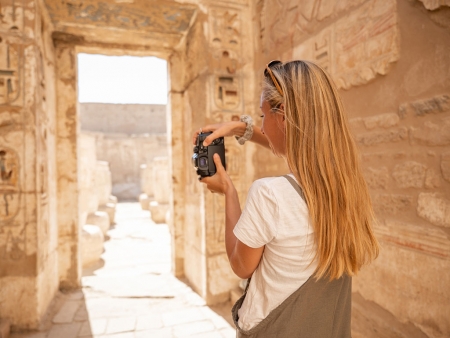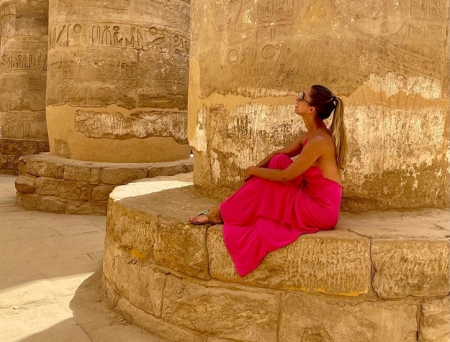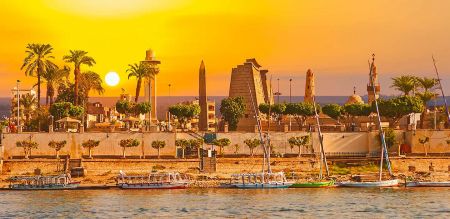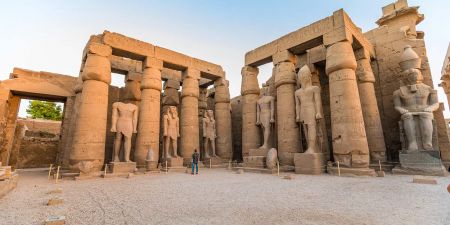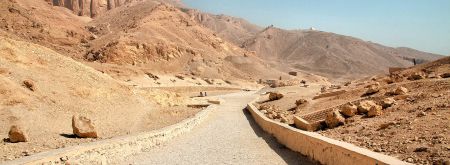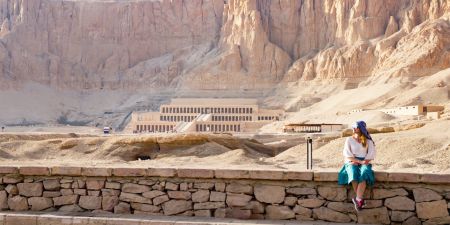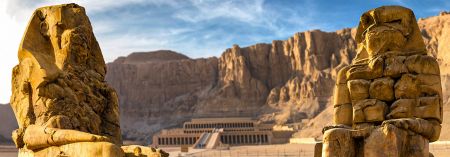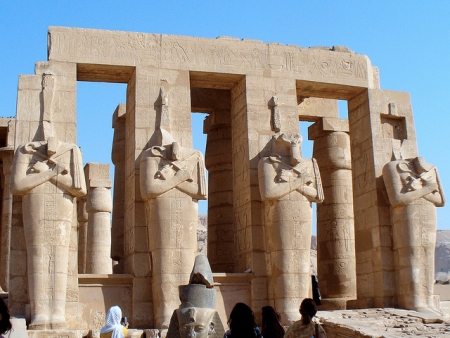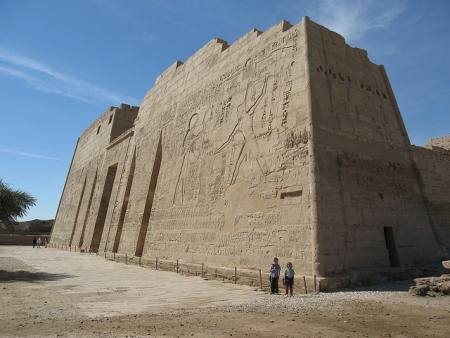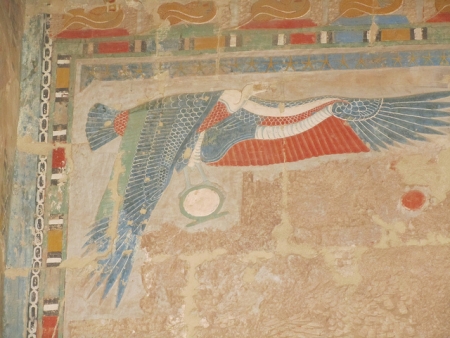Luxor Temple
.jpg)
UNESCO Status, Preservation, and Modern Restoration
Luxor Temple was added to the UNESCO World Heritage Site list in 1979 along with the rest of ancient Thebes. This recognition highlights its universal value and ensures global support for its preservation.
Excavation and Restoration Efforts
French Egyptologist Gaston Maspero began major excavations in the late 19th century, uncovering huge sections buried under houses, shops, and debris. In recent decades:
- Damaged reliefs have been cleaned and restored
- Fallen columns rebuilt
- Over 1,000 stone blocks stabilized
- 3D scanning and digital mapping used to document fragile inscriptions
These modern techniques help preserve the temple for generations to come.
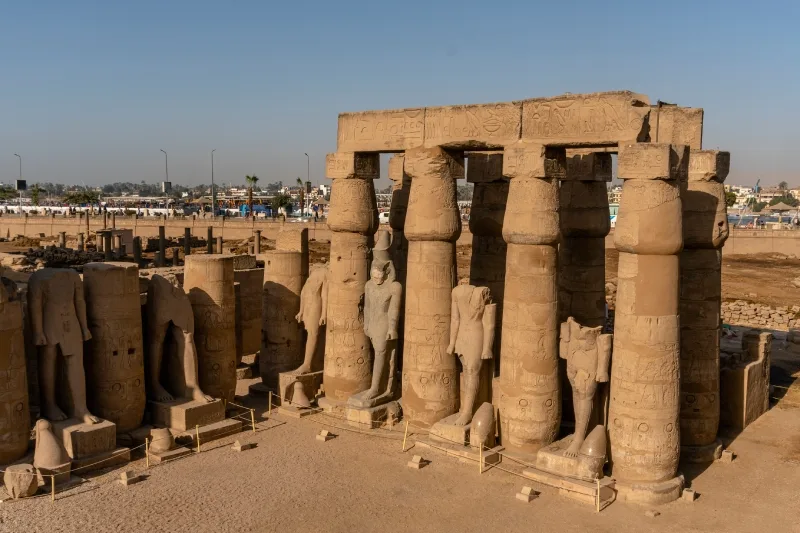
Luxor Temple is one of those places where ancient Egypt feels wonderfully alive. Set right in the heart of modern Luxor on the east bank of the Nile, this extraordinary temple has witnessed royal coronations, grand festivals, Roman legions, Christian worship, and Islamic traditions—all under the same sky. With more than 3,400 years of history carved into its walls, Luxor Temple remains one of the most accessible and captivating ancient sites in Egypt.
Unlike many temples built mainly for worshipping specific gods, Luxor Temple was dedicated to something deeper: the renewal of kingship and the celebration of divine rebirth. It was here, during the annual Opet Festival, that pharaohs underwent symbolic purification and reconnected with the gods of Thebes. Today, the temple stands as a living journey through layers of history—pharaonic, Roman, Christian, and Islamic—woven together in one extraordinary monument.
This complete guide walks through everything travelers need to know about Luxor Temple: its location, history, architecture, cultural significance, and the highlights they shouldn’t miss.
Where Is Luxor Temple Located?
Luxor Temple sits in the very center of modern Luxor city on the east bank of the Nile River in Upper Egypt. Unlike remote desert temples, this one rises right beside busy streets, hotels, cafés, the Corniche, and local markets, making it extremely easy to reach for visitors.
A Temple at the Heart of Ancient Thebes
In ancient times, Luxor was known as Thebes, the capital of Egypt during its most powerful dynasties. The temple’s ancient name, Ipet-resyt, means “Southern Sanctuary,” reflecting its role as the southern counterpart to the massive Karnak Temple Complex to the north.
A Riverside Monument with Perfect Alignment
The temple stands parallel to the Nile, and its builders deliberately positioned it to reflect harmony between the river, the city, and the sacred processions that once passed through its gates. Travelers standing at the entrance today can still feel how tightly connected the temple is to the Nile’s natural path.
Connected to Karnak by the Avenue of Sphinxes
One of Luxor Temple’s most remarkable features is its link to Karnak Temple through the Avenue of Sphinxes, a 2.7-kilometer ceremonial road lined with hundreds of sphinx statues. These statues appear in three styles:
- Human-headed sphinxes
- Ram-headed sphinxes from Tutankhamun’s reign
- Full ram statues built by Amenhotep III
This grand avenue was used during the Opet Festival, when priests carried the sacred barques of Amun, Mut, and Khonsu from Karnak to Luxor Temple to perform rituals of renewal and divine union.
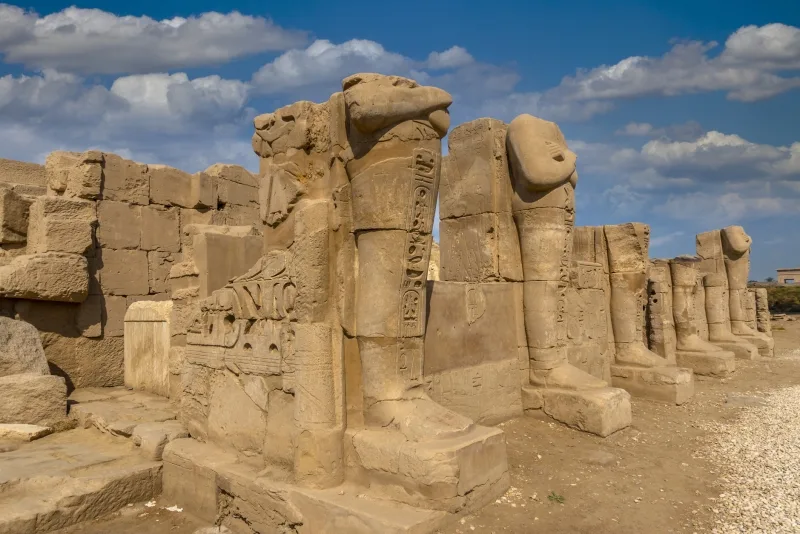
Customize Your Dream Vacation!
Get in touch with our local experts for an unforgettable journey.
Plan Your TripWho Built Luxor Temple and When?
The story of Luxor Temple spans centuries. It wasn’t the vision of a single ruler but the evolving masterpiece of several powerful pharaohs—and later, Roman and Islamic builders.
Amenhotep III: The Founder
Construction began around 1400 BCE under Amenhotep III of the 18th Dynasty. He built the main sanctuary, inner chambers, and a large courtyard. His architects used Nubian sandstone from Gebel el-Silsila, giving the temple its warm golden color.
Tutankhamun and Horemheb: Finishing and Decorating
Tutankhamun and his successor Horemheb completed many of Amenhotep III’s structures, adding carvings, reliefs, and decorations—especially scenes from the Opet Festival.
Ramses II: The Great Expander
A century later, Ramses II dramatically enlarged the temple by adding:
- a massive entrance pylon
- colossal statues of himself
- two pink granite obelisks (one remains; the other stands today in Paris)
- a huge open-air courtyard filled with columns and statues
Roman Influence
When the Romans occupied Egypt, they transformed parts of the temple into a legionary fortress and administrative center. They even added frescoes inside certain chambers—rare surviving examples of Roman art in Egypt.
Christian and Islamic Layers
Centuries later:
- A Coptic church was built inside the complex.
- In the 13th century, the Abu Haggag Mosque was constructed directly above the ancient temple floor—where it still stands and functions today.
This remarkable layering makes Luxor Temple one of the only ancient monuments in Egypt that still contains an active place of worship.
What Is Luxor Temple Made Of?
Most of the temple is constructed from Nubian sandstone, a durable stone ideal for tall columns and carved reliefs. Obelisks and some statues were crafted from pink granite, black granite, and quartzite, chosen for strength and symbolic meaning.
Traces of paint still cling to some carvings, reminding visitors that the temple was once brightly colored, not bare stone.

Construction began around 1400 BCE under Amenhotep III and continued with contributions from Tutankhamun, Horemheb, and Ramses II, making it one of Egypt’s oldest and most enduring monuments.
What to See at Luxor Temple
Every corner of Luxor Temple has a story to tell, but a few highlights stand out for travelers.
1. The First Pylon of Ramses II
This dramatic gateway is decorated with scenes of Ramses II’s battles. Flanking the entrance are gigantic seated statues of the pharaoh, representing him as both a political and divine leader. Only one original obelisk remains; its twin was gifted to France in the 19th century.
2. The Court of Ramses II
Inside the pylon lies a grand courtyard lined with papyrus columns, statues, shrines, and altars. Many statues in this courtyard show Ramses II in different divine forms, showcasing his influence over the temple.
3. The Great Colonnade of Amenhotep III
This iconic passageway contains 14 enormous papyrus-bundle columns, each rising nearly 19 meters high. The walls depict detailed scenes from the Opet Festival—drummers, performers, and priests celebrating the renewal of the pharaoh’s divine power.
4. The Great Court of Amenhotep III
A beautifully symmetric courtyard featuring rows of columns and richly carved walls. This space was used for various ceremonies and is among the best places to admire the precision of New Kingdom architecture.
5. The Inner Sanctuary and Barque Shrines
At the heart of the temple sits the sacred barque shrine of Amun. Alexander the Great rebuilt part of it during his rule, leaving behind inscriptions in traditional pharaonic style. Nearby, Amenhotep III’s “birth room” shows his divine origin—depicting the moment the god Amun touched the queen’s hand.
6. Abu Haggag Mosque
Still active today, this 13th-century mosque stands atop ancient temple columns. Its annual Moulid festival includes lively processions and celebrations that echo ancient Opet rituals.
7. The Restored Avenue of Sphinxes
Recently reopened, this ceremonial road connects Luxor Temple to Karnak Temple and features six barque stations used during festival processions.

Visiting Luxor Temple Today
One of the best things about Luxor Temple is how easy it is to visit. It’s open both day and night, offering two completely different atmospheres.
- Opening Hours
Generally: 6:00 AM – 10:00 PM
(Night visits are highly recommended.)
- Tickets
Tickets are available at the entrance. Many tours combine Luxor Temple with Karnak Temple, and some allow travelers to walk part of the Avenue of Sphinxes.
- Tips for the Best Experience
- Wear comfortable shoes—there’s a lot to explore.
- Bring water, especially if visiting in summer.
- Visit early morning or evening to avoid crowds.
- Combine your visit with the Luxor Museum or a Nile-side stroll.
- Best Time to Visit
October to April offers ideal temperatures. Summer evenings are also pleasant and atmospheric.
Why Luxor Temple Still Matters
Luxor Temple is more than an ancient monument—it is a continuous story of human creativity, faith, and identity. It reflects:
- The grandeur of New Kingdom architecture
- The power of ancient rituals
- The influence of Roman occupation
- The endurance of Coptic and Islamic traditions
- The connection between heritage and modern Luxor’s economy
It remains a symbol of how civilizations layer themselves over time, building on the past while creating something new.
For travelers, Luxor Temple is one of Egypt’s most unforgettable sites—a place where they can walk through history, touch ancient stones, and stand where pharaohs once celebrated their divine rebirth.
Luxor Temple is in the heart of Luxor city, Egypt, on the east bank of the Nile River, near hotels, markets, and the famous Avenue of Sphinxes.
Amenhotep III built the main sanctuary, Tutankhamun and Horemheb added decorative reliefs and completed unfinished sections, and Ramses II expanded the temple with colossal statues, obelisks, and a grand entrance. Roman and Islamic additions followed centuries later.
Luxor Temple was the spiritual and ceremonial heart of ancient Thebes, central to the Opet Festival, which celebrated the renewal of kingship. Over centuries, it served as a pharaonic temple, Roman fortress, Christian church, and Islamic mosque, showing continuous cultural significance along the Nile in Luxor.
Luxor Temple celebrated royal renewal and divine kingship. Pharaohs participated in the Opet Festival, traveling along the Nile and ceremonial routes, reinforcing their sacred connection to the gods of ancient Thebes.
Visitors can explore:
- First Pylon and Ramses II statues
- Court of Ramses II
- Grand Colonnade of Amenhotep III
- Inner Sanctuary and Barque Shrine
- Amenhotep III’s “birth room”
- The Abu Haggag Mosque, still active today
The temple is primarily made of Nubian sandstone, with granite and quartzite used for statues, obelisks, and decorative carvings. These materials have allowed Luxor Temple to endure for over 3,400 years.

